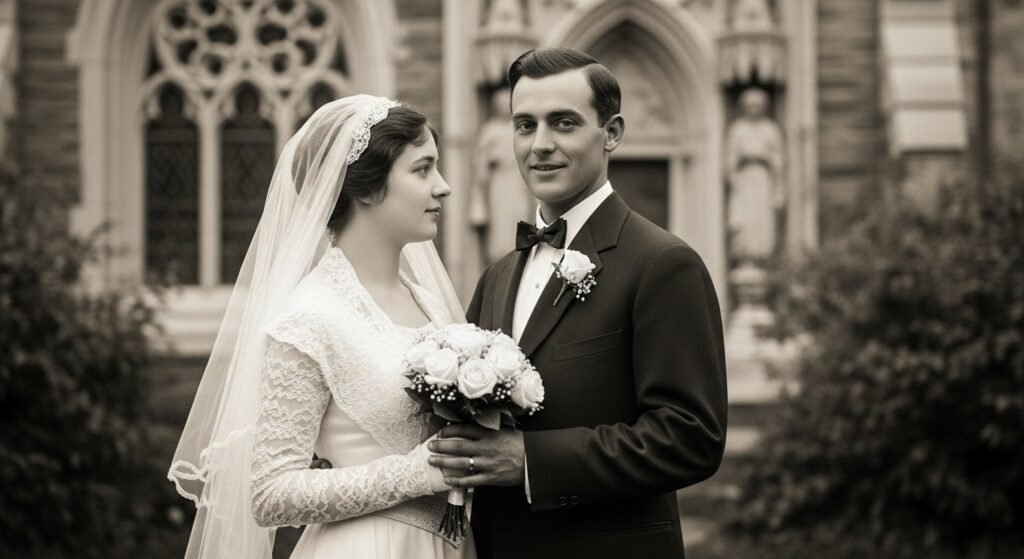
Marriage in the United States has never been a static concept. It is a living, evolving institution shaped by cultural traditions, shifting social attitudes, and changing economic realities. While many still cherish the traditional ideal of marriage as a lifelong bond between two people, the modern reality paints a much more complex and diverse picture.
Marriage today is influenced by everything from historical values to new forms of partnership that reflect the individuality of each couple. Understanding this evolution helps us appreciate how love, commitment, and family continue to transform in a rapidly changing society.
🌿 Historical Roots and Traditional Values
For centuries, marriage in the U.S. was rooted deeply in religion and community values. It provided structure, economic security, and a social framework for raising children. Gender roles were clearly defined—men were typically the providers, while women were homemakers and caregivers. Marriages were expected to last a lifetime, and divorce was often stigmatized.
This traditional model gave stability to families, but it also left little room for individuality, personal growth, or equality between partners. Over time, as society progressed, these rigid norms began to loosen, giving rise to new ways of approaching love and marriage.

🔄 Shifting Demographics and Changing Attitudes
In recent decades, American marriage has experienced dramatic changes:
- Increased Cohabitation: More couples now choose to live together before tying the knot, treating it as a “test run” for long-term compatibility.
- Later Marriages: Many prioritize education, careers, and financial security before marrying, leading to older average marriage ages.
- Rising Divorce Rates: Although rates have leveled off, divorce remains common, reflecting society’s growing acceptance of individual happiness and second chances.
- Same-Sex Marriage: Since the 2015 legalization, marriage equality has redefined what it means to be a couple in the U.S., celebrating love in all its forms.
- Interracial and Interethnic Marriages: With growing diversity and openness, cross-cultural relationships are flourishing, enriching the social fabric.
💍 Modern Marriage: A Spectrum of Choices
Today, marriage in the U.S. isn’t “one-size-fits-all.” Couples are writing their own rules, leading to a variety of relationship models:
- Egalitarian Partnerships: Shared responsibilities in work, parenting, and home life are becoming the norm.
- Dual-Career Marriages: Both partners often work full-time, balancing career goals with family aspirations.
- Childfree Marriages: Many couples are choosing not to have children, focusing instead on shared experiences, travel, and personal growth.
These changes reflect a broader cultural shift toward respecting individual choices and redefining traditional expectations.

⚖️ Challenges and Opportunities Ahea
Marriage in the modern U.S. faces undeniable pressures—rising living costs, demanding work schedules, and evolving social expectations. But with these challenges come opportunities for couples to build stronger, more meaningful relationships. Open communication, emotional intelligence, shared values, and mutual respect are key ingredients for thriving partnerships in today’s world.
🔮 The Future of Marriage in America
Looking forward, the institution of marriage is expected to continue evolving. Some will embrace traditional vows, while others will experiment with new forms of commitment that better fit their lifestyles and beliefs. What remains constant is the human need for connection, companionship, and love.
The future of marriage in the USA is not about abandoning tradition—it’s about expanding it, making space for different journeys and diverse expressions of love.
💬 Join the Conversation
What are your thoughts on how marriage is changing in America?
Share your perspective in the comments below — we’d love to hear your story!
📌 Disclaimer
This blog reflects general observations and cultural trends. Individual experiences may vary. This content is for informational purposes only and not intended as legal or relationship advice.